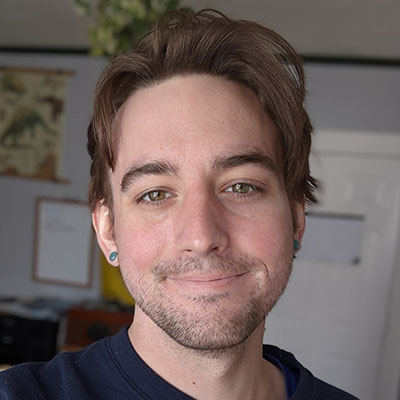Course Overview
In the age of the smartphone and digital photography more and more people are able to access the previously cost prohibitive tools necessary to take a photograph. However, this more equitable access to photographic creation places pressure on the photographer to continually develop new ways of visualizing the world with their camera so as to set their artwork apart from the countless images available on social media.
Students will engage directly with historical photographic methods of pinhole cameras and cyanotype to begin to build a new understanding and vocabulary of image making that can be applied to the rapidly changing photographic landscape of the 21st century.
Over the course of the two weeks students will build their own pinhole cameras from shoeboxes and learn the basics of darkroom photography history, science and etiquette. Students will then step out into the sunlight and using plants and flowers they will create cyanotype collage images in the style of Anna Atkins, one of the first woman photographers who began her photography practice in 1841.
All students who successfully complete the course will receive a Certificate of Completion and have the opportunity to request a Syracuse University credit or noncredit transcript.
Learning Objectives
- Explore the history and development of photography through historical modes of photographic creation
- Challenge students understanding and positioning of photography and the camera in 21st century.
- Develop an historical understanding and appreciation for the scientific and chemical aspects of photography
- Gain appreciation for the craft and work of photographic image making
- Create artwork that students can proudly share with their family, friends and classmates.
Course Information
Course Prefix and Number: APH 267 / SCN 165
Format: On Campus (at Syracuse University)
Eligibility: Students must be of rising high school sophomore*, junior or senior status – or a 2025 high school graduate.
*Rising sophomores are only eligible for the noncredit version of this course.
Credit: 3 credits or Noncredit
Grading:
- Credit: A-F
- Noncredit: Pass/Fail
3-Credit:
- Residential: $4,895
- Commuter: $3,919
Noncredit:
- Residential: $4,295
- Commuter: $3,318
Program rates are subject to change and will be approved by the board of trustees. Discounts and scholarships are also available.
Program Information
Summer College – On Campus: Experience what college is really like: take a college-level course, live in a residence hall, have meals with friends in a dining hall, and participate in activities and events on campus.
Course Dates and Details
| Program | Course Dates | Synchronous Class Time (Eastern Time) | Credit/Noncredit |
|---|---|---|---|
| Summer College – On Campus | 2-Week Session I: Sunday, July 6 – Friday, July 18, 2025 | MTWThF; 9 a.m. – 4 p.m. | 3 credits or Noncredit |
To see if this course is ‘open,’ refer to the full course catalog.
Course Requirements
Required Supplies
Please know that any supply purchases are not included in the overall tuition fee. Students will need to budget for additional course supplies, textbooks, supply kits, etc.
Students will be working with photographic chemicals that may stain clothing. Aprons, smocks or work clothes are highly recommended.
Typical Day
Tentative Schedule
9 a.m. – Noon: Class Demonstrations, Lectures, Discussions, and Guided Worktime
Noon – 1 p.m.: Lunch break!
1 – 4 p.m.: Open studio time for students to work in small groups and complete weekly assignments. Friday critiques
End of Class Event: There will be a “gallery” opening on the last Friday afternoon before the course is dismissed. It will be a low-key hallway show of students’ unframed work either in the Shaffer photo lighting studio or the hallways, it will be an excellent time for students and parents alike to share their art and passion.
When class is over, and on weekends, students can look forward to various Summer College – On Campus activities to meet and connect with other students! Check out our On Campus Experience page for more information!
Faculty Bio
Ryan Somelofske

Ryan Somelofkse (he/him/his) is a Syracuse based artist who uses image, sound and object to conduct idiosyncratic investigations of the fracture between veracity and understanding of the history of our local environments. He received his MFA in Art Photography from Syracuse University in 2021 and his BFA in Film, Photography and the Visual Arts from Ithaca College in 2015. He is a film and photography instructor in the Film and Media Arts Department at Syracuse University and the Park School of Communications at Ithaca College.
